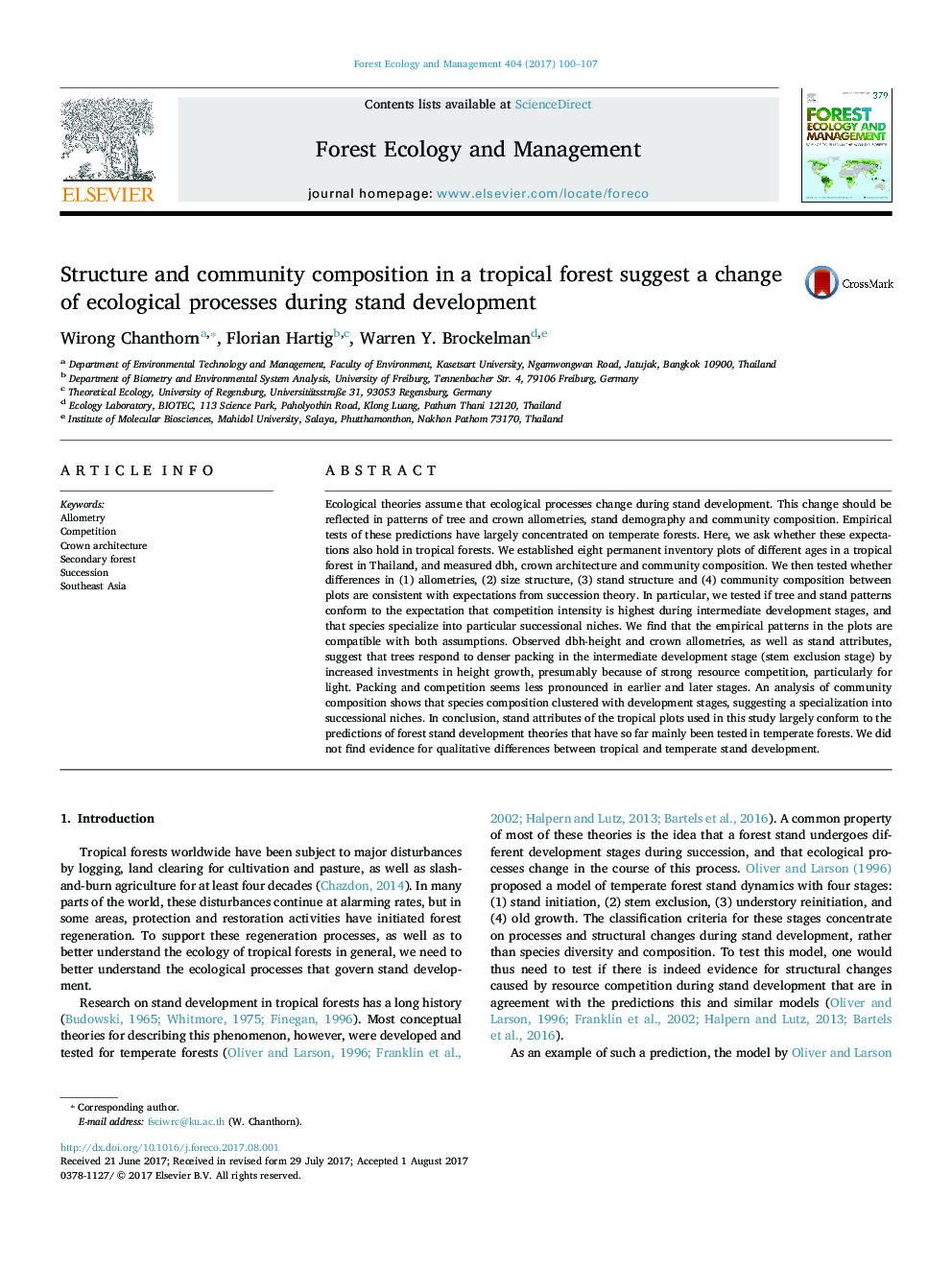| کد مقاله | کد نشریه | سال انتشار | مقاله انگلیسی | نسخه تمام متن |
|---|---|---|---|---|
| 6459144 | 1421354 | 2017 | 8 صفحه PDF | دانلود رایگان |
- We present data from new permanent successional plots in a Thai tropical forest.
- We test if these data fit to stand-development theories from the temperate zone.
- Allometries and stand attributes suggest competition peaks at intermediate stages.
- Species cluster according to stages of stand development.
- Results support a general theory of succession for temperate and tropical zone.
Ecological theories assume that ecological processes change during stand development. This change should be reflected in patterns of tree and crown allometries, stand demography and community composition. Empirical tests of these predictions have largely concentrated on temperate forests. Here, we ask whether these expectations also hold in tropical forests. We established eight permanent inventory plots of different ages in a tropical forest in Thailand, and measured dbh, crown architecture and community composition. We then tested whether differences in (1) allometries, (2) size structure, (3) stand structure and (4) community composition between plots are consistent with expectations from succession theory. In particular, we tested if tree and stand patterns conform to the expectation that competition intensity is highest during intermediate development stages, and that species specialize into particular successional niches. We find that the empirical patterns in the plots are compatible with both assumptions. Observed dbh-height and crown allometries, as well as stand attributes, suggest that trees respond to denser packing in the intermediate development stage (stem exclusion stage) by increased investments in height growth, presumably because of strong resource competition, particularly for light. Packing and competition seems less pronounced in earlier and later stages. An analysis of community composition shows that species composition clustered with development stages, suggesting a specialization into successional niches. In conclusion, stand attributes of the tropical plots used in this study largely conform to the predictions of forest stand development theories that have so far mainly been tested in temperate forests. We did not find evidence for qualitative differences between tropical and temperate stand development.
Journal: Forest Ecology and Management - Volume 404, 15 November 2017, Pages 100-107
